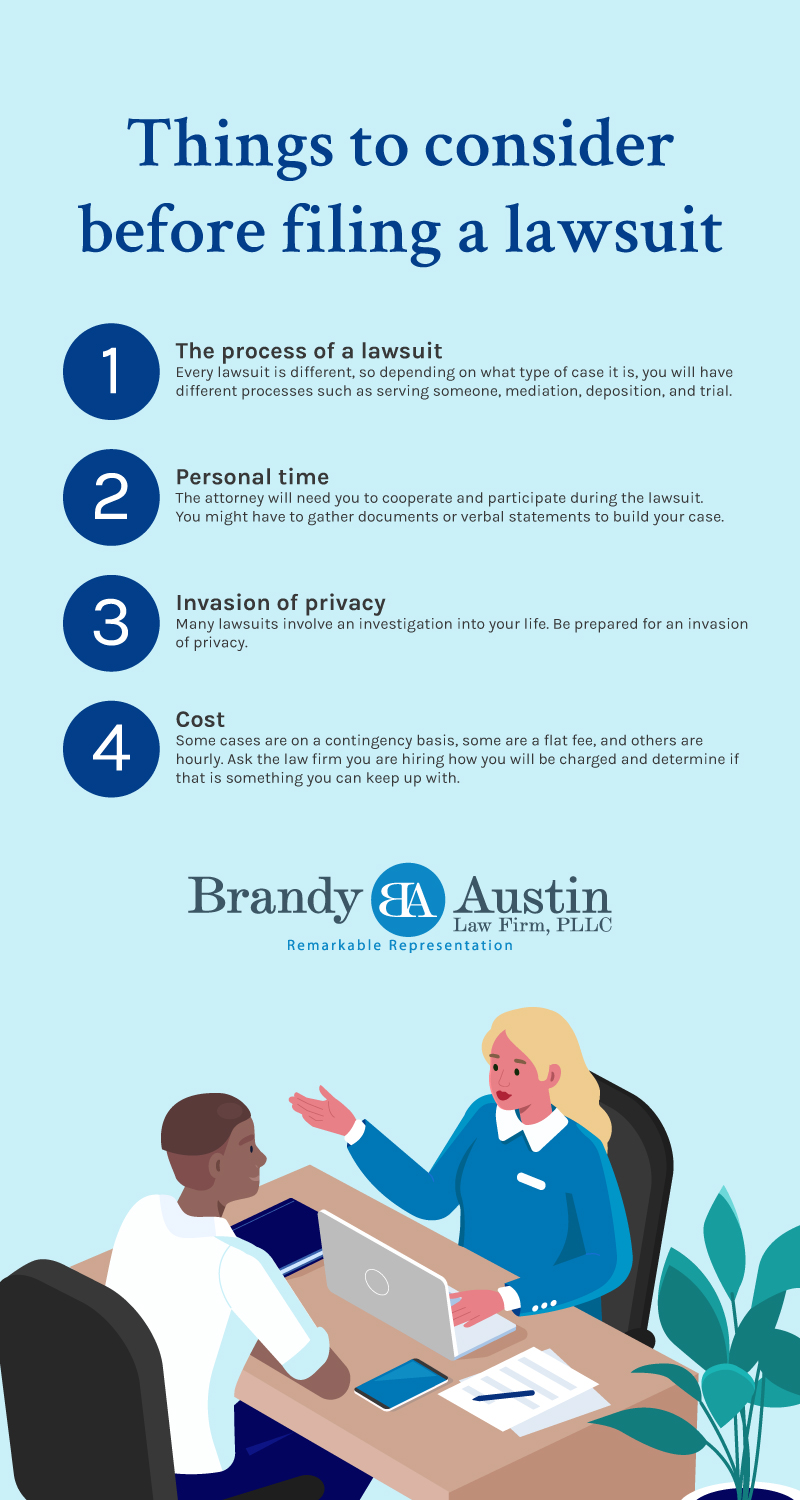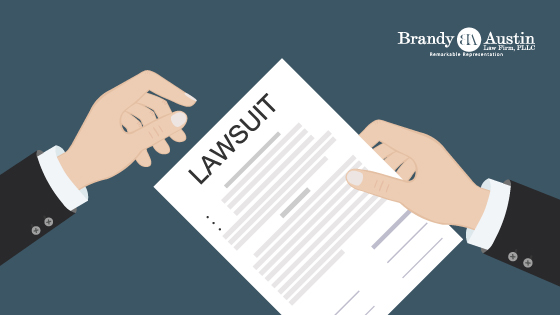Length
The average length for lawsuits will be different depending on the desired outcome, the amount of cooperation from the opposing side, or opposing counsel.
For a personal injury lawsuit, they may take around 6 months to close out after the Plaintiff’s Original Petition has been filed, but it can also last from two to three years.
Most civil law cases also tend to take about one to three years.
The fastest way to end a lawsuit is to accept a settlement, however, not every case may offer a settlement. There will be cases in which the other party is unwilling to cooperate with you.
It also needs to be noted that not every settlement that may be proposed is going to cover expenses and damages, therefore, even when a settlement is proposed, it won’t be accepted, therefore continuing to add to the length of a lawsuit.
Process of a Lawsuit
Before Filing:
Once a decision is made to file a lawsuit, the first step an attorney does is research the applicable laws for the specific facts of your case.
Then, the paperwork begins. This process includes drafting, sending to you for reviewing, filing with the courts.
Serving:
The documents then need to be served. Whether to an individual or business, it typically will be served through a sheriff, constable, process server, or via certified mail.
Waiting Time:
In most cases, counting from the day that a person is served, there is a 20-30-day limited time given to file an answer. These days are calendar days and include weekends and holidays. It is possible to have a deadline greater than or less than 20-30 days.
If there is a scheduling order put in place, the deadlines will all be decided and approved by both parties.
Discovery:
If an answer is filed, discovery commences. This process includes interrogatories, requests for documents, and admissions are received. There is typically a 30-day limited time given for those requests to be submitted. This step gives preliminary information to both parties.
Deposition:
The plaintiff is the first person that is deposed. Then, the defendant(s) are deposed. Following the defendant(s) are the witnesses.
This process is where each side is asked questions by opposing counsels, and the court reporter notates everything that is said. This process is recorded, and you are under oath.
Mediation:
Mediation may be agreed to or ordered by the court. This is a meeting between all parties in which solutions are proposed.
Trial:
Once the previous steps have been completed, trial dates are given.
Other Endings:
A case can be settled from the time the lawsuit if filed, all the way until the day of trial.
A case may be dismissed
Personal Time
Although the attorney you hire will complete the documents, petitions, and other paperwork needed, there will still be several things outside of the office that will need to be completed by you.
Due to the time it takes to gather the supporting information for your lawsuit, there may be occasions where you will need to request time off. In a personal injury case, this would include time requested off for doctor appointments.
Other examples include:
- Notarizing documents
- To gather bank statements or other financial information
- To gather text messages and emails from the opposing party
Invasion of Privacy
In order to prepare for trial, there is an investigation into a person’s past that is done. Of course, the only information that is considered “relevant” to the case and not privileged can be asked for by an opposing counsel, or party if the other party is pro se.
Information that is allowed to be requested by an opposing side or opposing counsel include:
- where did you live
- where did you work
- prior medical conditions
- prior criminal history
- prior tax history
Cost
With each case, the costs will be different. There are three different retainer payments, and each is very different. In a lawsuit, the price is typically an hourly amount, or a contingency if it’s a personal injury claim. However, there are some lawsuits that ask for a flat fee retainer.
Contingency Fee Agreement:
Contingency fees are typically for legal representation where the attorney does not take a fee up-front for the attorney’s legal services. Instead, a percentage of gross is agreed on that will ve paid at the settlement of the case.
Example of Cases that Use Contingency Retainers:
- Motor Vehicle Accidents
- Products Liability
- Premises Liability
Flat Fee
Flat fees are paid prior to a case beginning, and they are a set price.
Examples of Cases that Use Flat Fee Retainers:
- Drafting of singular petitions or documents
- Prenuptial and Postnuptial Documents
- Estate Planning
- Demand Letters
- Criminal
- Bankruptcy
Hourly Fee Agreements:
Hourly fees are paid based on the amount of work that is put into each type of case. Each hour of the office’s work is paid.
Examples of Cases that Use Hourly Fee Retainers:
Contact us today for more information or to schedule your free consultation (817) 841-9906.


